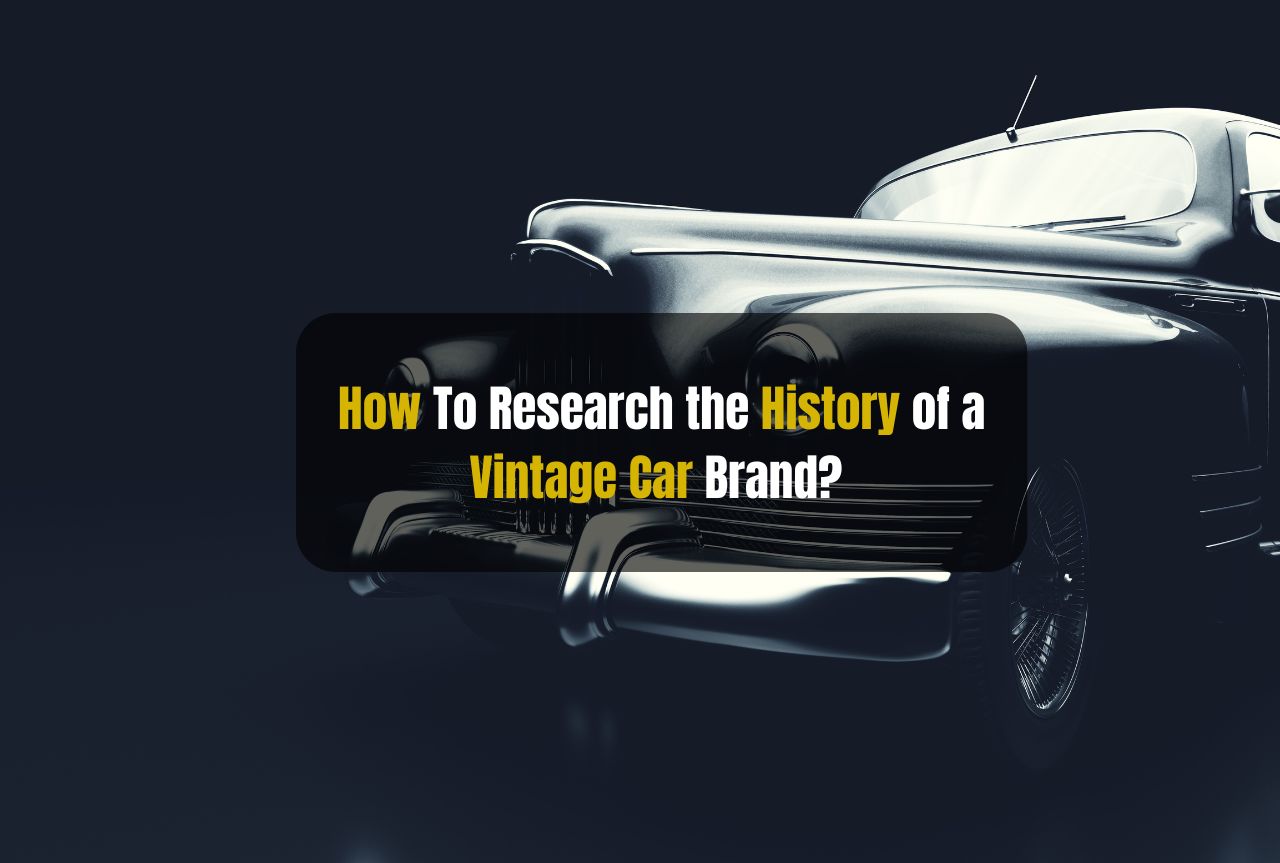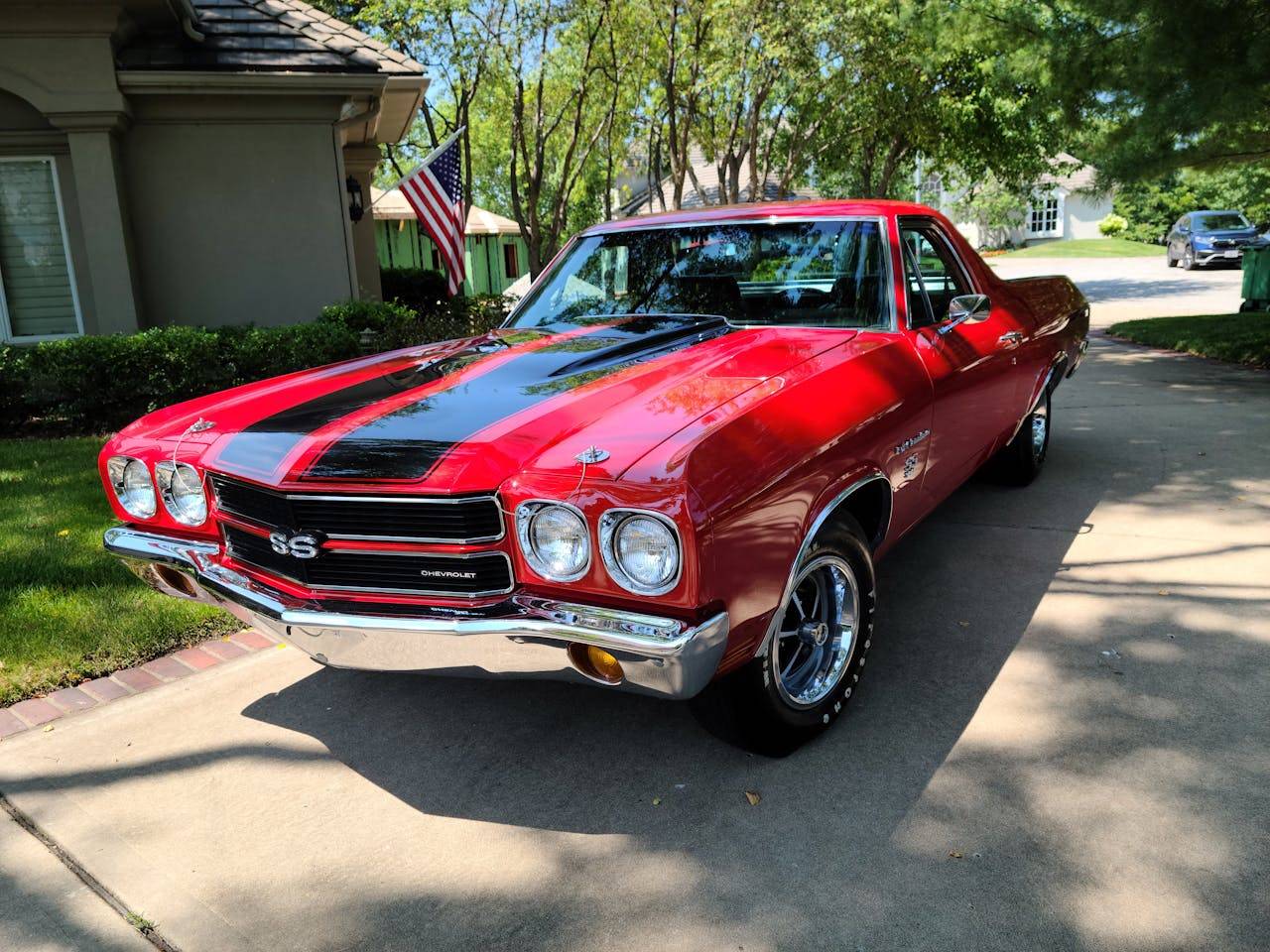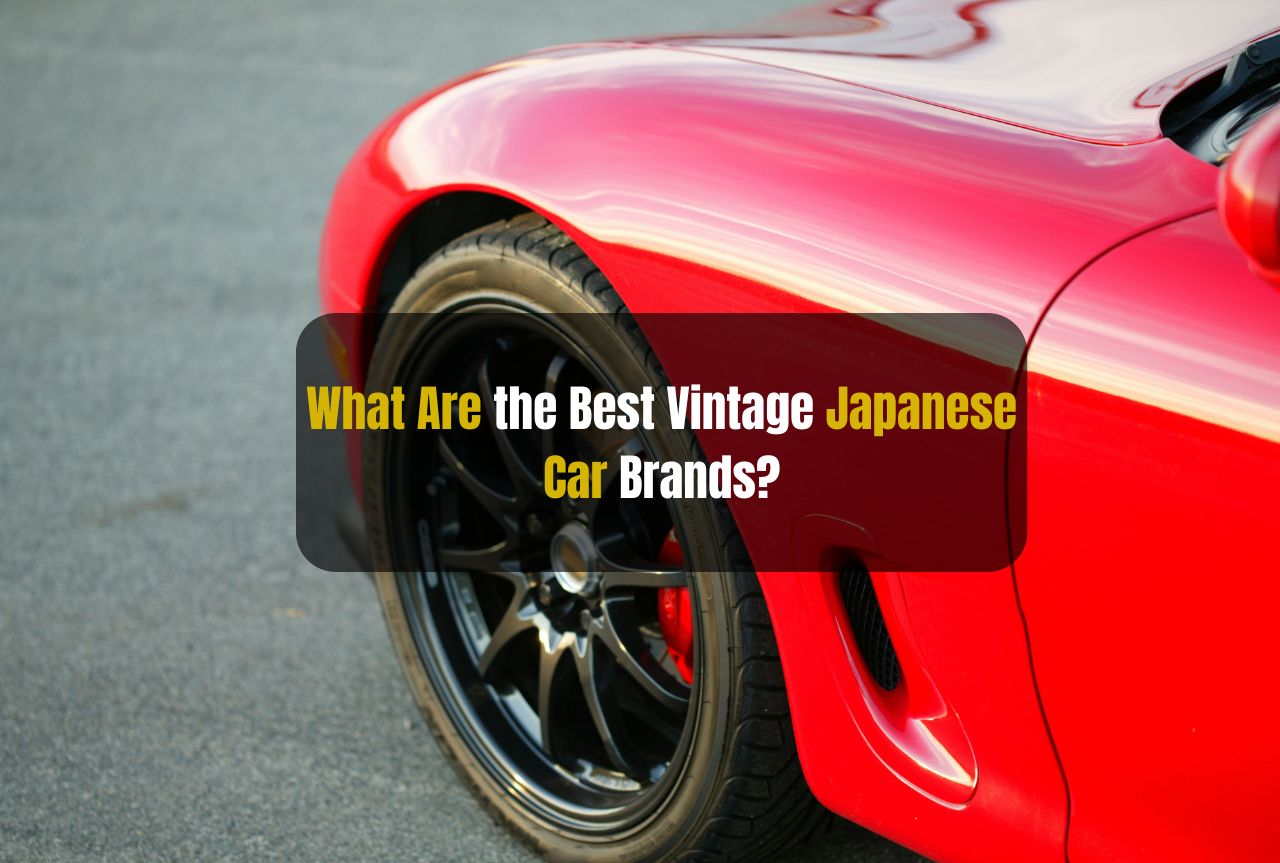Studying how vintage car brands evolved over the years can be fascinating and rewarding. It can be a great hobby for automobile fans, historians, and curious minds who want to learn about automotive heritage.
In this guide, we’ll walk you through the process of researching a vintage car brand and teach you proven steps, research sources, and research techniques for acquiring as much history as possible about a vintage car.
What Is The Significance of Vintage Car Brands?
Such brands can often symbolize the zenith of automotive technological and design development of an era—shaped by the society and world in which they were produced.
But sometimes, a car’s history can be more personal and more culturally specific. It can be tethered to ideas of identity, as well as the stories of people and places.
Starting Your Research Journey
Identify Your Research Goals
First, decide what you want to learn from your research. Do you want to learn about the model, the founder’s origins, or the way the brand changed the automobile industry? Defining your goals will help you stay focused and make the search easier.
Gather Basic Information
Start with basic facts about the brand: when the brand was founded, its key models down through the years, standout features and achievements, and key events in its history (Wikipedia is a great place to start; other sources include automotive magazines and official brand websites).
This is important not just to give you a sense of basic information but also as a basis from which you can build more specific knowledge.
Utilizing Online Resources
Brand Websites and Archives
There are websites for most vintage car brands, and the most devoted ones feature great historical archives with timelines, original photos, old advertisements, and old milestones.
Examples are Mercedes-Benz, Ford, and Porsche.
Automotive Forums and Communities
Online forums and communities can be a great source of information. Enthusiasts share a lot of relevant advice on Reddit, classic car forums, social media groups, and similar corners of the web.
Sometimes, it is important to search for information in non-official places.
Digital Libraries and Archives
Today, the availability of digital libraries and archives provides access to old books, magazines, and microfiches from centuries past. Google Books, InternetArchive, and Europeana are some of the websites that allow you to explore old automotive magazines, industry reports, and historical books, helping you define the times in which the car brand had been operating.
Newspapers and Magazines
Contemporary newspaper and magazine articles also contain original accounts of a vintage marque. You can find these on sites such as Newspapers.com or in the archives of car-enthusiast magazines such as Popular Mechanics, Road & Track, and others.
Visiting Physical Archives and Libraries
Local and National Libraries
Many libraries contain large collections of automotive text. They may have books, magazines, and technical manuals on their shelves, and national libraries sometimes have special collections of automotive text.
The Library of Congress collections in the United States are examples of automotive materials.
University Archives
Some university special collections and archives have automotive history – that is, unique documents, such as company records, blueprints, or personal papers. (Those connected with the auto industry’s beginnings – or important figures in early design and industrialization – are most interesting.) Good places to start a search among these sources are any universities with engineering or industrial design programs.
Museums and Historical Societies
Automotive museums and historical societies are great places to research brands of old cars. If you’re looking for information about a brand of car that’s no longer being produced – say, Packard or Pierce-Arrow – be sure to stop into the Henry Ford Museum in Dearborn, Michigan, or the Petersen Automotive Museum in Los Angeles, or even the National Automobile Museum in Reno.
You’ll be pleased to know that their staff are quite knowledgeable and may even be able to help point you in the right direction for your research.
Conducting Interviews and Connecting with Experts
Contacting Car Clubs and Enthusiast Groups
Car clubs with members interested in a vintage car’s brand can be highly useful, as can specialist enthusiast groups focusing on a single make of vehicle (such as Rolls Royce).
Such groups tend to boast members who possess deep knowledge about the history of the company that produced the make in question, and they have access to oral history accounts. Car clubs can also boast archives and libraries.
Interviewing Experts and Historians
Questions asked of experts or historians may enrich an understanding of a marque’s history. In many cases, research will lead to automotive historians, authors of books on the subject, and curators of automotive museums. Consider contacting those who have published on specific brands to prepare questions in advance.
Analyzing Historical Documents
Reading Company Histories and Biographies
If you’re planning a comprehensive history encompassing a company or a segment of the industry, your books and biographies will be particularly helpful.
When researching and writing on both of these subjects, I’ve made a point of looking for credible books by recognized publishers, others who have researched me, and those who did the research and wrote the book. This ensures the most detailed picture.
Examining Technical Manuals and Design Documents
Technical manuals of a designer or even an old design brief can provide great insight into an old car brand’s engineering and conceptual philosophies. These can likely be found in libraries such as a university’s automotive archive or enthusiast groups.
Understanding the technical side can supplement the historical and social appreciation of a brand’s contributions and vision in automotive history.
Studying Patents and Innovations
A useful source for such knowledge is looking at patents that the brand has filed. It may contain knowledge of technological advances and innovations – searchable databases of patents are available at Google Patents and the United States Patent and Trademark Office.
These websites contain a wealth of information that may show how the brand has actively contributed to automobile technology.
Understanding the Broader Context
Examining Economic and Social Factors
For a deeper perspective, think of the vintage car brand as part of the economics and society of its time. Once the market context loses its attraction, you’ll need to turn to researching something else.
Look for the economic and social conditions, trends, and changes of that era, and think about how those conditions affected your brand, whether for better or for worse. War, immigration, technological innovation? Did a better or worse car emerge in competitor countries? What economics reported slower and faster growth for different industries and visionary and reactionary politicians? What history books emerge from these various stories, focusing on societal developments and aspects of popular culture? These are things to probe at the library.
Exploring International Influence and Impact
Many vintage marques have had a great impact and reach on the international scene. Identify the international context and how the brand was perceived and accepted in different countries.
Find out where and when it goes abroad, and participate in other global events like car shows and races. An international context can make the brand’s history recognizable and complete.
Documenting and Sharing Your Findings
Organizing Your Research
Once you’ve established information-gathering routines, process and track them with the same structure on digital spreadsheets, note programs, and document management systems. This will allow you to reference materials and share them later.
Creating a Research Timeline
Significant historical events can be recorded as a timeline of pivotal happenings to clearly outline the path and major moments in your brand history. This may be a useful approach if you want to share your brand’s biography with colleagues or other interested parties.
Writing and Publishing
When you’re done, write about your research in an article, blog post, or even a book: start with a compelling lead, lively language, and some illustrations or documents if you can. Publishing online makes your work accessible to a larger audience and helpful to other people interested in history, as well as to other historians.
Leveraging Technology in Your Research
Utilizing Digital Tools and Software
There are various digital tools and software available to help you organize your notes, sources, and references, from Evernote or Notion to organize your notes, Zotero for references, digital mapping for locations, etc.
Engaging with Interactive Resources
Interactive resources such as online museum tours, digital exhibitions, and reconstructions can immerse you in vintage car-brand history and enable you to know more about it. Many museums and archives offer these sources via their websites that you can access from your home in any part of the world.
Participating in Online Courses and Webinars
There are online classes and webinars on automotive history, as well as on the methods of research. Coursera, edX, and Udemy are just some of the locations where you can learn skills and tools from experts in a specific field. Doing these can add a few new dimensions to your research.
The Bottom Line
Researching the history of a prewar automobile brand is detective work and a particularly satisfying one since clues aren’t readily available from one source but often spread across many of them in a bewildering array of forms, languages, and formats. It’s as rewarding as it is gratifying to unify and verbalize this vast and bewildering mass of material into a coherent history of an automobile brand.








Leave a Comment